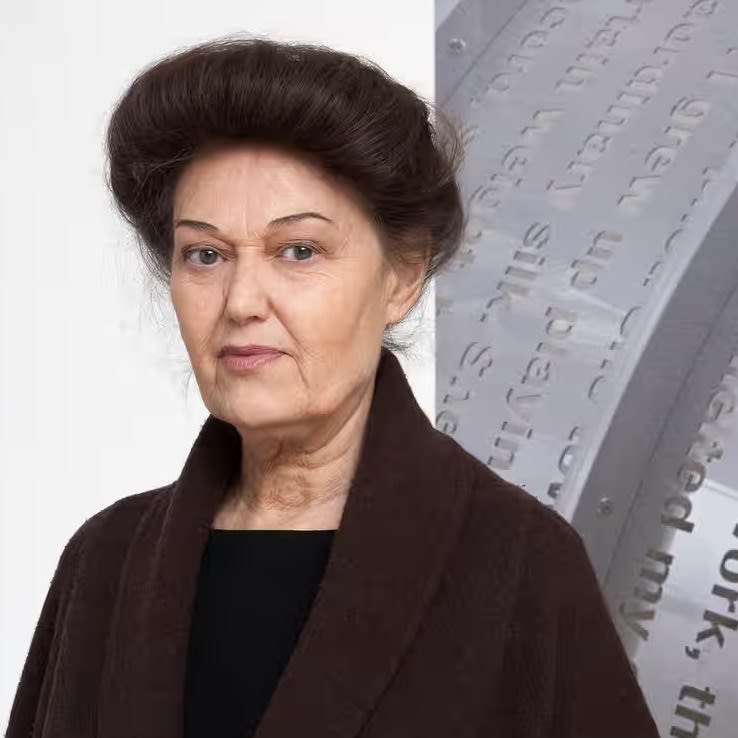Born in Iowa in 1941, artist Mary Kelly has been creating works from a feminist and postmodern perspective for the past 50 years, often using compressed lint from her tumble dryer. She has lived in Florence, Beirut and London, and now lives in Los Angeles, where she teaches at the University of Southern California. Her installation Post-Partum Document, an exploration of the relationship between mother and child, caused furore for displaying stained nappies at the ICA in the mid-70s. Kelly’s latest exhibition, Face-to-Face, is at Pippy Houldsworth Gallery, London, from Thursday to 3 November.
Tell us about your forthcoming exhibition Face-to-Face…
This show is a little unusual for me: it’s a survey of works I’ve done related to war and violence since 1966, a 50-year period. I feel that the subject has become more intensely central to how I think at the moment. The title draws on Emmanuel Levinas, who talks about the face as the site of your ethical decision-making: it’s the point where you recognise “the other” and their vulnerability, and is also the moment where it is impossible to kill someone.
You’ve done a lot of work based around the protests of 1968, and the Arab spring in 2011 – do you feel similarly inspired by the protests of the last few years?
The Million Women march was a wonderful and exciting moment. I haven’t done a work about that; I’m not a journalist responding to every issue. I will have to distil those facts and try to filter them into a rather more personal story. But the way we return to those moments, it’s not as though things are finished – these issues are never over, you have to continually address them.
Why do you think lint works so well for your work?
I happened upon the lint. I always work in a studio that’s at home – I try to draw domestic things into the work – and I was in the kitchen. I heard a South African woman on the television, testifying, describing how her son was shot. I was doing washing and it just came together, the voice and the idea of this very, very ephemeral material. I thought it had the quality of representing what was left over, the residue of the trauma that’s passed on. It also really appealed to me because of its repetition – it has to be done in many units [some works can take up to 10,000 cycles] – in a way that carries these particles of your own clothes and skin and things like that.
What’s going through your mind when you’re putting on load 6,743?
Good question... “How can I get someone else to do this for me?”
Do you think male and female artists are treated differently?
It varies, of course, but there are differences. One is that – and for people of colour this would be the same – it can look like the problem is being addressed, but it is more of a turnover at the bottom; at the highest level, if you want to call the highest level something that’s endorsed by the market and the museums, it’s the same. And I’ve noticed that the way some women have been written about, it’s always about the work in question. There’s not the same riff they do for the men, which is to say where they came from, how they’re connected, who they influenced. They don’t give them a historical presence.
Are you worried about how closing borders will affect artists’ minds and work?
I think it’s devastating. Living all over very different places gives you insight about how different cultures and political systems work, but it also shows you in some way how things are connected. I think that all borders are anathema to art. Internationalism is, I believe, always connected to movements that are progressive and the opposite goes for closing down.
Where do you find hope?
That is difficult. In combination with the perpetual war and the rise of authoritarian populism all over the place, it doesn’t look good. But there’s also so many movements: #MeToo and the unbelievably brilliant students that demonstrated about gun violence after the shootings. I think if I see any hope it’s in the current generation of women of colour: they are just on fire. If you look at most of the demonstrations and organisations that are active right now, the spokesperson is usually a young black woman, and that is hopeful.

